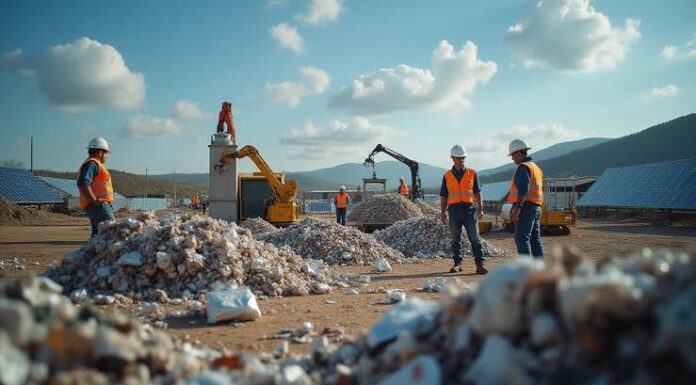
MTM Critical Metals (ASX:MTM)(OTCQB:MTMCF) has reported achieving a 98% recovery rate of antimony from U.S.-sourced electronic waste, using its proprietary Flash Joule Heating (FJH) technology. The announcement was made Tuesday and marks a new technical milestone in the Australian company’s efforts to develop domestic sources of critical metals through e-waste processing.
The feedstock tested for the process consisted of printed circuit board (PCB) materials originating from the United States. According to MTM, the circuit boards underwent upstream thermal processing to remove plastics and volatile components, resulting in a concentrated carbonaceous residue. From this residue, MTM was able to recover material containing 3.13% antimony (Sb), a figure significantly higher than typical grades found in mined ore.
Comparative Grades and Context
The company noted that the 3.13% antimony content retrieved from the e-waste is more than triple the ore grades found at some of the world’s largest known primary antimony deposits, including the Xikuangshan mine in China. Globally, mined antimony ore typically grades between 0.1% and 1.0% Sb. By contrast, MTM’s results demonstrate a substantially higher concentration from what is commonly referred to as “urban ore” — the reclaimable metals content found in discarded electronics.
Antimony is classified as a critical mineral by the U.S. Department of Defense (DoD) and the Department of Energy (DoE) due to its strategic importance in defense technologies, flame retardants, semiconductors, and energy storage. The U.S. currently has no significant domestic production of the metal, relying heavily on imports from China, Russia, and Tajikistan.
Urban Mining as a Domestic Source
MTM’s recovery figures from U.S.-based e-waste come at a time when federal initiatives are increasingly prioritizing domestic refining and recycling capacities for critical materials. The company said the results demonstrate the potential of its FJH process to recover strategic metals from urban feedstock at industrially relevant scales.
MTM’s CEO, Michael Walshe, stated in a press release that the recovery of high-grade antimony from e-waste illustrates the broader value of the company’s technology. “Achieving 98% recovery of antimony at over 3% grade, from domestic urban feedstock, is particularly significant given the U.S. currently has no meaningful domestic Sb production,” he said.
Walshe added that MTM is actively engaging with U.S. government agencies, including the Department of Defense and Department of Energy, about possible federal funding and strategic collaboration opportunities to support onshore critical metal recovery.
Facility Development and Feedstock Supply
MTM Critical Metals, through its wholly owned U.S.-based subsidiary Flash Metals USA, is developing its first commercial facility in Chambers County, Texas. The location, situated within the Gulf Coast petrochemical corridor, was secured last month and is already pre-permitted for the intended activities.
The facility will use the company’s proprietary Flash Joule Heating process — a technology designed to rapidly heat material using pulsed electrical current — to extract valuable metals from processed e-waste feedstock. According to MTM, the method offers a fast, energy-efficient pathway for separating metals from complex material streams without the use of acids or cyanide.
To support its commercial rollout, MTM has signed long-term agreements with U.S.-based suppliers for over 1,100 tonnes of e-waste feedstock per year. This supply is intended to provide consistent input for the Texas facility and support scaling up of operations over the coming years.
E-waste — which includes discarded smartphones, laptops, household electronics, and industrial components — is one of the fastest-growing waste streams globally. According to the United Nations’ Global E-waste Monitor, more than 50 million tonnes of e-waste are generated annually, with a significant portion either incinerated or sent to landfills.
A growing number of governments and private entities are investing in so-called “urban mining” technologies to reclaim valuable materials from this stream. Metals such as gold, silver, copper, rare earth elements, and antimony are increasingly targeted for recovery, especially given the geopolitical and environmental risks associated with traditional mining.
MTM previously reported ultra-high-grade recoveries of gold, silver, and copper from the same category of e-waste used in the latest antimony testing. These earlier results, combined with the antimony recovery announced Tuesday, highlight the complex and often underutilized value of circuit board-derived feedstock.
The company has not yet disclosed when commercial production at the Texas site will begin but has indicated that preparatory work is underway. It is expected that the results announced this week will be used to support regulatory filings, secure additional feedstock contracts, and inform discussions with federal agencies about financial or logistical support for domestic processing infrastructure.
MTM said it will continue to test a broader range of feedstocks and explore the scalability of its technology for other critical and strategic metals. Future announcements may include updates on pilot-scale results, facility commissioning timelines, or government partnership outcomes.
MTM Critical Metals’ latest findings are part of a growing trend toward domestic recovery of high-value metals from electronic waste. With a reported 98% recovery rate and antimony concentrations significantly above typical mined ore grades, the company’s proprietary technology could play a role in addressing critical material shortages, reducing reliance on foreign imports, and supporting U.S. national security goals.
The above references an opinion and is for information purposes only. It is not intended to be investment advice. Seek a licensed professional for investment advice. The author is not an insider or shareholder of any of the companies mentioned above.
The post MTM Critical Metals (ASX:MTM) Achieves 98% Antimony Recovery from U.S. Electronic Waste appeared first on MiningFeeds.






